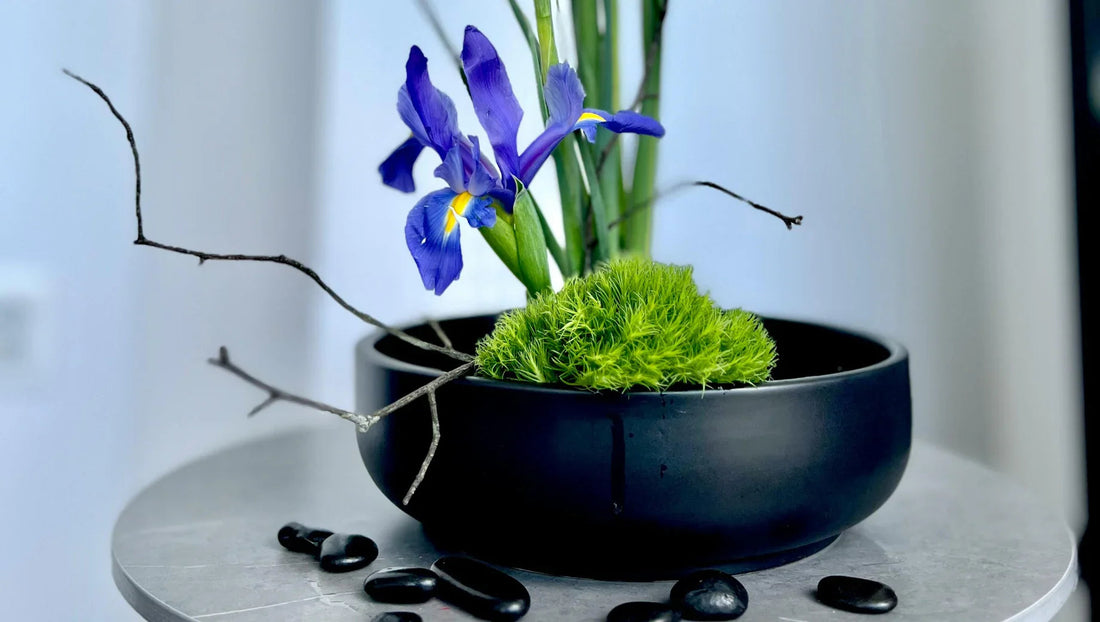
Ikebana: Discover the Timeless Japanese Art of Flower Arrangement
Share
When we think of flower arrangements, many of us picture lavish Western-style bouquets bursting with colorful blooms. But in Japan, there's a more delicate, mindful approach to floral design that has been practiced for centuries—Ikebana, the traditional Japanese art of flower arrangement.
More than just placing flowers in a vase, Ikebana is a living art form that emphasizes harmony, simplicity, and the natural beauty of each stem, leaf, and bloom. For anyone passionate about floral design, cultural traditions, or home decoration, learning about Ikebana offers a new way to appreciate flowers—not just for their beauty, but for their deeper meaning.
What is Ikebana?
The word Ikebana (生け花) literally means "making flowers alive" or "giving life to flowers." Unlike Western floral arrangements that focus on volume and symmetry, Ikebana is about minimalism, balance, and movement. Each element is carefully selected and placed to create a graceful composition that captures the natural essence of life.
Ikebana is a centuries-old tradition, originating in the 6th century when floral offerings were made at Buddhist temples. Over time, it evolved into a refined art form practiced by the samurai, aristocrats, and later, people from all walks of life.
The Philosophy Behind Ikebana
At its heart, Ikebana reflects key values in Japanese culture:
- Appreciation of imperfection and transience (wabi-sabi)
- Harmony between human and nature
- Mindfulness and quiet contemplation
Each arrangement typically follows a three-point structure representing:
- Heaven (Shin): the tallest, main stem reaching upwards
- Earth (Soe): a secondary element that extends sideways
- Human (Hikae): the shortest stem completing the triangle
This symbolic structure brings balance and spiritual meaning to each creation.
Ikebana’s Unique Beauty: The Power of Empty Space
One of the most striking aspects of Ikebana is the thoughtful use of empty space, known as "Ma" (間). In Ikebana, what's left empty is just as important as what is filled. The spaces between the stems allow the arrangement to breathe, creating a sense of calm and openness.
This is why Ikebana arrangements often look minimal but feel incredibly elegant and balanced. The container, whether it’s a ceramic bowl or a tall vase, is also an essential part of the design—it’s not just holding the flowers, it’s contributing to the entire story.
Types of Ikebana Styles
There are many Ikebana schools and styles, but here are some of the most well-known:
- Rikka (Standing Flowers): A complex, formal style that represents the grandeur of nature.
- Shōka (Living Flowers): A simpler style focusing on the essence of each plant with three main lines.
- Nageire (Thrown-In Style): A spontaneous, natural-looking arrangement often placed in tall vases.
- Moribana (Piled-Up Flowers): A more modern style using shallow containers, allowing for freer, expansive designs.
Each style carries different rules and emotions, but all honor the connection between flowers, space, and the person arranging them.
Ikebana Today: More Than Just Decoration
Today, Ikebana is practiced worldwide as both an art form and a meditative hobby. It’s often used to create beautiful, minimalist flower arrangements for homes, hotels, restaurants, and events.
For people living in or visiting Thailand, you can even find Ikebana workshops and florists that offer Japanese-inspired flower arrangements in Bangkok and other major cities. Whether you’re looking to send a unique flower gift or add a calming touch to your living space, Ikebana is a perfect choice.
Why You Should Try Ikebana
- It's mindful. Arranging flowers slowly and intentionally helps reduce stress.
- It's versatile. Ikebana can be as simple or as intricate as you like.
- It's timeless. The minimal, balanced style complements modern spaces beautifully.
- It honors nature. You’ll start noticing beauty in every leaf, branch, and curve.
Final Thoughts
Ikebana teaches us that flowers don’t need to be loud to be beautiful. Sometimes, a single bloom and a carefully chosen stem can say more than an entire bouquet.
If you’re looking to explore flower delivery services in Thailand that celebrate both local and international styles, or simply want to bring a little peace and beauty into your home, Ikebana is a meaningful place to start.
